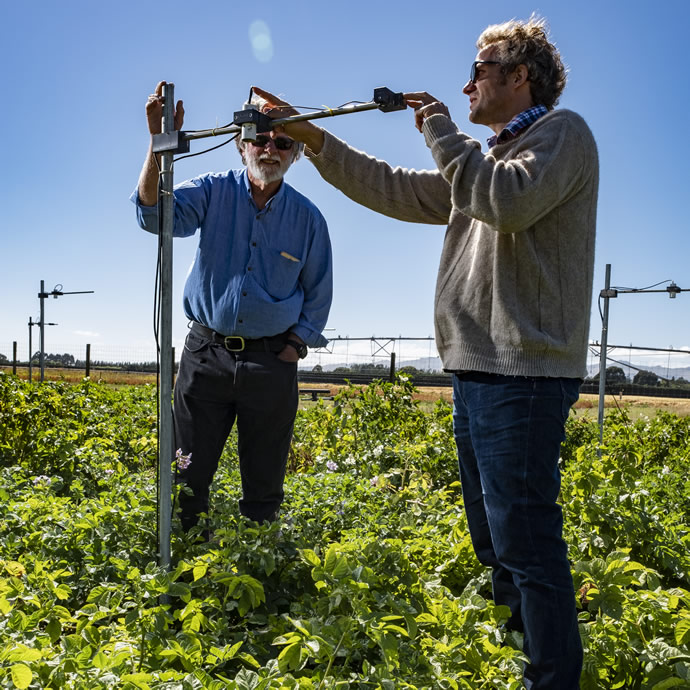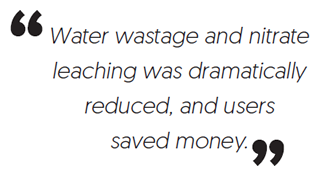Reducing the effects of land intensification
Irrigation usage remains a hot topic in New Zealand. Since the late 1970s the area of farmland in New Zealand under irrigation has doubled every 12 years. New irrigation systems introduced over the past two decades have given farmers and growers the ability to adapt to demand and accurately apply water at appropriate intensities to their land.
However, the amount of water required on different soil types and pieces of land varies from place to place. Too little or too much water can easily be applied, leading to yield losses, nutrient leaching and wasted water.
In 2013 the MBIE-funded collaborative programme ‘Maximising the Value of Irrigation’ (MVI), led by Manaaki Whenua with Plant & Food Research and the Foundation for Arable Research, took on the challenge of creating new irrigation scheduling and management systems at the paddock scale. That programme is now drawing to a close, and the results are showcasing what could be a major change in irrigation management.

One group of MVI researchers used high-resolution sensor mapping and in-field soil and crop-sensor monitoring systems to assist with precision irrigation, leading to a water saving of between 9 and 30% when irrigation was varied according to the different soils at the site.
The sensor mapping system was trialled on six farms, where researchers processed the survey data into management zones to record the main soil differences. The soil variability was then tested through physical soil sampling to measure how much water each soil zone could hold.
The team designed, built and used wireless sensor networks for near realtime monitoring at irrigation sites and sent this information via a smartphone app to the participating farmers to inform them of precise irrigation schedules and to monitor daily crop water usage.
 “The new systems work alongside existing irrigation scheduling technology, mapping and monitoring a field at sub-paddock scales at near real-time monitoring by calculating exactly how much water is needed at the right time and place,” says Manaaki Whenua’s Programme Lead, Carolyn Hedley. “We proved that we could dramatically reduce water wastage, save users money, and almost completely stop irrigation-related nitrogen leaching losses,” she adds.
“The new systems work alongside existing irrigation scheduling technology, mapping and monitoring a field at sub-paddock scales at near real-time monitoring by calculating exactly how much water is needed at the right time and place,” says Manaaki Whenua’s Programme Lead, Carolyn Hedley. “We proved that we could dramatically reduce water wastage, save users money, and almost completely stop irrigation-related nitrogen leaching losses,” she adds.
Alongside the soil moisture research, another group of MVI researchers used remote-sensing methods to create a technique for monitoring daily crop water usage to help calculate how much water a crop is using each day at the paddock scale. The researchers found that their method reduced drainage to near zero and concluded that it could substantially reduce the environmental impact of irrigation.
MVI is applied science at its sharpest. The new irrigation scheduling and measurement systems developed as part of the programme will enable New Zealand’s farmers to make effective irrigation decisions to improve productivity, reduce costs, and lessen the negative environmental impacts of overwatering.
